GigaWatt PowerSync, PowerSync PLUS, PowerSync ULTRA, and LC-2 EVO power cables
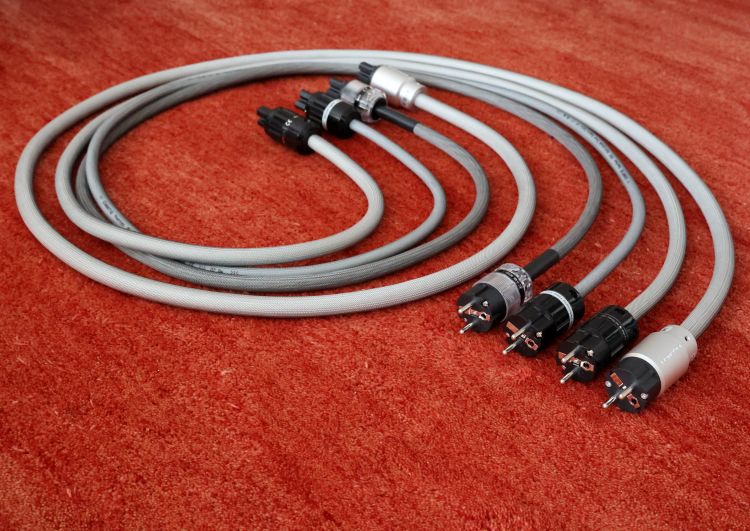
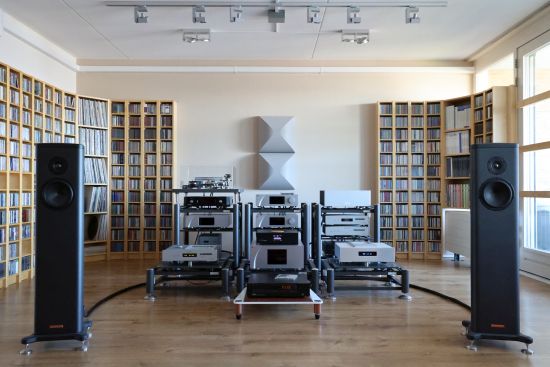
System Context
The core of the main system consists of the CH Precision C1 DAC, L1 preamp, A1.5 power amp with the Grimm MU1, Antipodes K50, and Taiko Audio Extreme servers as main sources, and Magico S1 MkII speakers. All interlinks are Driade Flow Link Reference 808, both balanced and unbalanced. The speaker cables are the Mad Scientist Black Magic.
The core components are placed on Artesania Exoteryc racks with Carbon Fiber Linear Arms. The MU1, as well as most review components, are placed on an Artesania KSH2 Krion shelf that couples via Artesania Carbon Fiber Linear arms to an Artesania Aire Floor Platform. The Aire is basically a lower Exoteryc rack and it sounds identical.
The power for this system is delivered by a dedicated run of solid-core installation wire, sourced in the Breaker Box from a Siemens Sitor Cylindric Fuse Cartridge, and ending in three GigaWatt G-044 single Schuko Wall Sockets behind the audio system. My normal power distributors have a shielded metal case and provide solid connections but use simple linear brass strip conductors. They are nothing special but they get the job done in a predictable manner. I use three distributors, one for the main system, one for analog, and one for review components.
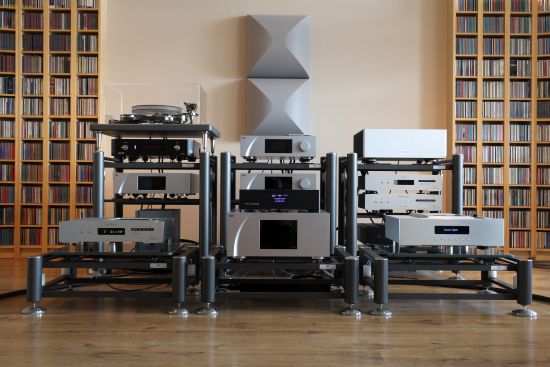
All the GigaWatt review cables were delivered in sets of two, intended for use primarily with the CH Precision C1 DAC and L1 Preamplifier. This way, I can apply two identical cables or mix and match.
Running In
Many cables change with prolonged use. While the effect varies, power cables, too, can evolve over time. Just to be on the safe side I listened to the GigaWatt cables when new, while running in, and after prolonged use, at the time of writing almost 2 months and counting.
While I did note differences as the cables settled in, they are rather subtle, especially with the PowerSync cables. So subtle, in fact, that I would not worry about it. However, I did note a measure of bedding in with the LC-2 EVO, the cable becoming less dry and slightly more fluid and relaxed over time. It’s probably a good idea to bend these solid core cables into shape and leave them alone.
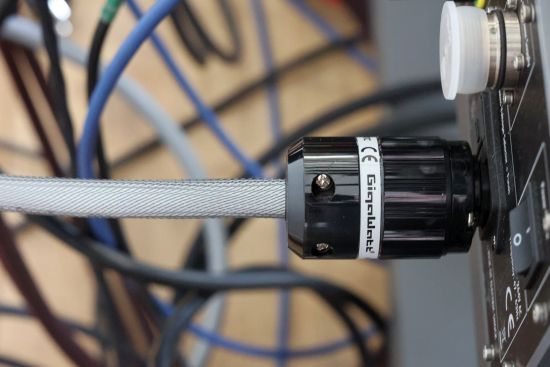
Listening – PowerSync
Just to provide a baseline, instead of the freebie OEM cable that comes in the box, I normally use Belden 19364 with a Bals Schuko and Oyaide C-004 IEC. The cable itself costs peanuts but the C-004 makes it relatively expensive. To be more precise: the PowerSync cable costs almost the same as the Oyaide C-004 connector alone. But as we will see, using a pricey high-end connector is not necessarily always the answer.
Starting with the entry-level PowerSync, it strikes me that even this very affordable cable looks well-made, it is very supple and has good weight, and the proprietary connectors look and feel solid. There’s really nothing that says “entry-level” with this cable. Connected to the CH L1 preamp instead of the Belden 19364, the PowerSync sounds fuller in the bass, perhaps slightly more full-bodied than I would consider strictly neutral, but the balance is well-chosen. It’s not strictly warm or fat, but very smooth and easy-going.
The overall presentation is spacious and tonally more saturated than with the Belden. The latter is more expressive but can also be lean-sounding and in certain systems, despite the Oyaide connector, a little hard in the upper midrange. The PowerSync, however, seems to never have heard of edginess or hardness. It has a pleasantly smooth midrange and a well-behaved treble.
The cable’s transient behavior is on the soft side and this is arguably its most obvious Achilles heel. This makes it comparatively less agile in terms of speed and expression, and slightly less airy on top.
At the price of only 240 euros, though, the cable performs admirably. Moreover, I suspect that this cable’s properties will actually pair very well with entry-level systems.
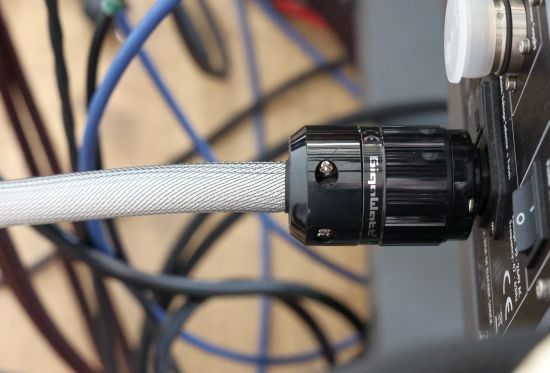
PowerSync PLUS
All factors being equal, a thicker diameter conductor will usually sound fuller but also fatter and often less expressive. Or at least, this has been my experience in many cases. The main exception has been where individual litze wires are coated or individually isolated but I don’t think this is the case with the PowerSync PLUS. So, I’m not sure how GigaWatt manages it, but this time, the thicker cable with more copper sounds fuller indeed, but it does not result in fatness, excess warmth, or a lack of expression. The entry-level PowerSync cable sounds leaner than the PowerSync PLUS but I actually get the impression that the PLUS is slightly more propulsive and dynamic than the basic PowerSYNC while remaining beautifully neutral.
By comparison, the NBS Dragon Fly III is slightly more airy and refined, and subtly more expressive through the midrange and treble, but not more dynamic or lively overall. In the bass, the NBS is actually a little too relaxed and could be tighter and better controlled. It has a soothing and dreamy sound but the GigaWatt offers more solidity, better focus, more expression, and a much higher level of neutrality. What I think is rather special about the PowerSync PLUS is that it is neutral and beautifully linear, yet not dry or technical and actually very natural.
The Belden is tighter and more controlled in the bass but in spite of the Oyaide C-004, it is a little rough overall. In addition, whilst it may initially seem quite open, the Belden is actually a little hazy and congested in the upper bass and it lacks the focused conviction that the GigaWatt has.
Stepping further down just for fun, a Standard OEM cable is the most unassuming of all. When powering the C1 and L1 preamp with such cables, superficially, they seem to fare surprisingly well. They offer good articulation and sound even-handed, with good transparency and refined, airy treble. But in comparison to Belden and even more so compared to the GigaWatt, the sound is also rather lean and dimensionally compacted, and really rather dull. Most of all, the standard cable lacks conviction, timbral expression, body, and drive. So, while I would not go so far as to call standard power cables the epitome of evil in audio, one can easily do better.
Getting back on track, the PowerSync PLUS is significantly more robust, more articulate, and expressive than the Belden. Whilst fuller and more richly saturated, the cable does not sound warm, thick, or plush. Compared to the OEM cable and the Belden it could be said to sound very slightly dark, but that may also be an illusion. In any case, the treble that it offers is perfectly balanced between refinement and expressive precision. In an absolute sense, I feel that it could be a little bit more articulate, and its transients are not quite as crisp as I would like, but overall, this is a really great cable that I think will work in a large variety of systems. And at 360 euros, I consider it basically a no-brainer.
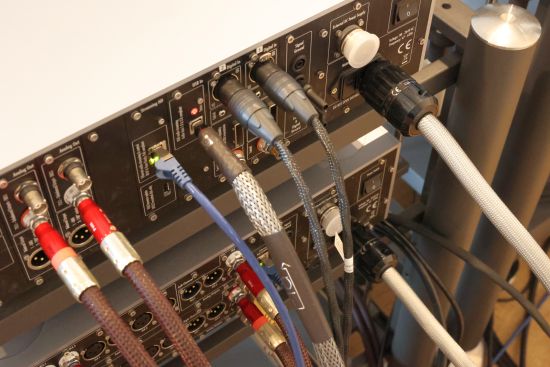
2x PowerSync PLUS
Relative to what I consider the CH sound, and certainly compared to the C1 DAC, the CH Precision L1 preamp is slightly lean-sounding. As I found, this makes it a prime candidate for the fuller-sounding PowerSync PLUS cables. Adding a second PowerSync PLUS to the CH C1 DAC produces a very noticeably wider and deeper soundstage and removes the last remaining “lean-ish” Belden sonic signature. The result is a beautifully smooth, deeply saturated, and free-flowing sound that I think will have many people with preconceptions of “overly clean CH Precision sound” scratching their heads.
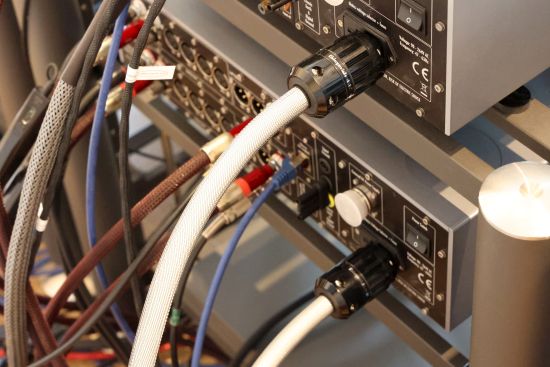
Sure, in certain settings, the brand can sound analytical but it definitely does not need to. And it certainly does not do so when powered by a pair of PowerSync PLUS cables. Especially vocals and large orchestral arrangements now pour out of the speakers in a very organic manner with great liquidity, yet, while still remaining admirably neutral.
Above all, I would say that the sound with the two PowerSync PLUS cables has a majorly increased emotional charge, allowing one to be engulfed by sweet, lush, and liquid music, if perhaps not sitting on the edge of the seat. For me, the second PowerSync PLUS cable makes the sound just a bit too relaxed.
This made me particularly curious about the PowerSync ULTRA!
Next: PowerSync ULTRA, LC-2 EVO, and Conclusion

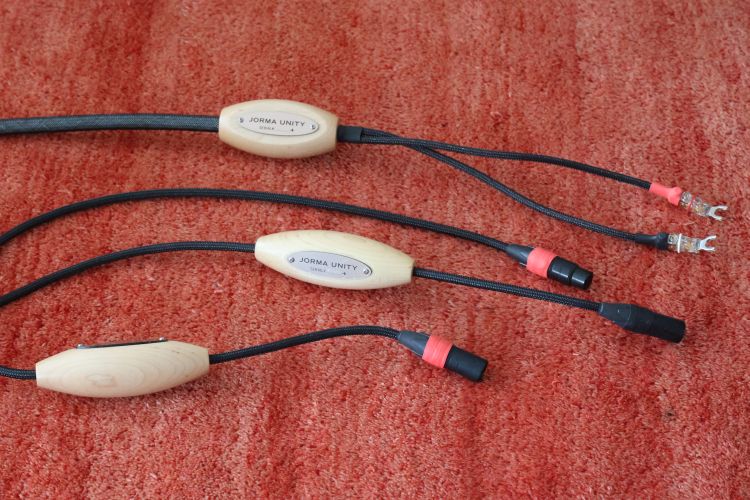
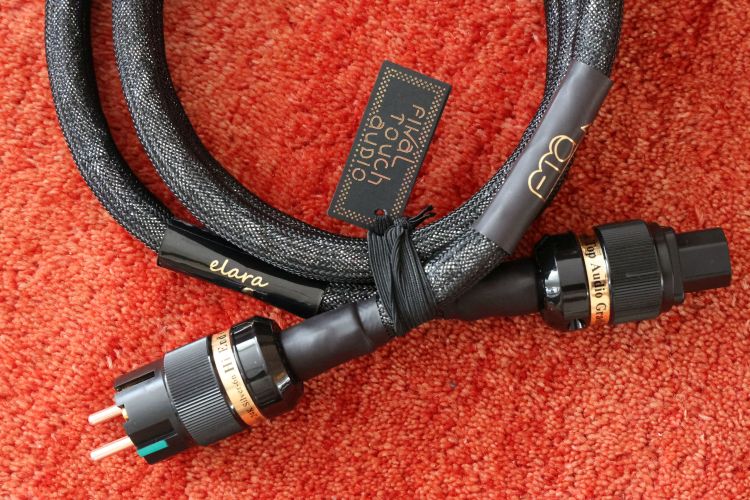
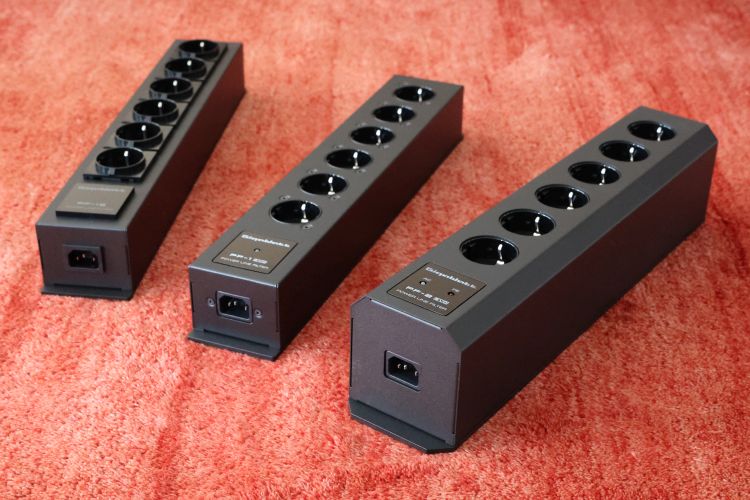
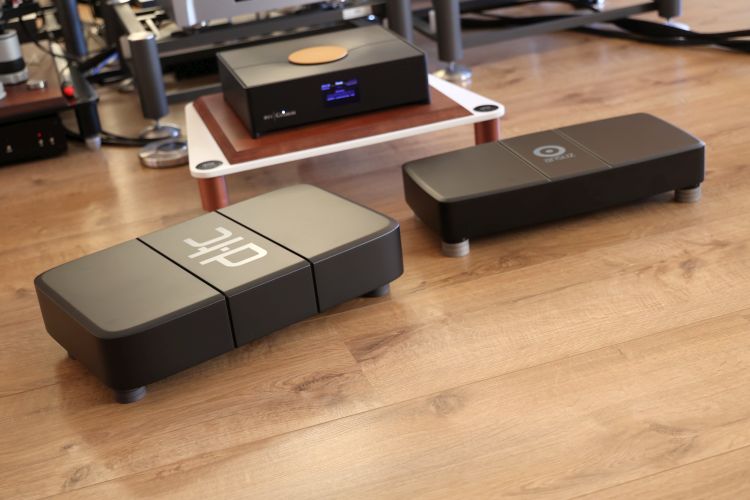
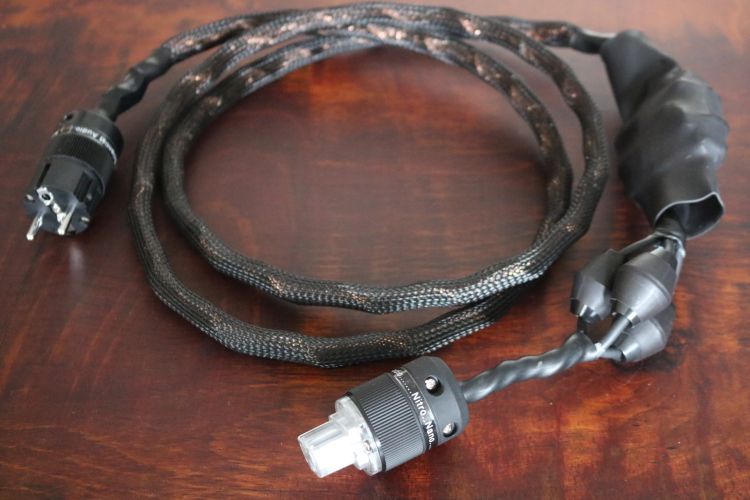
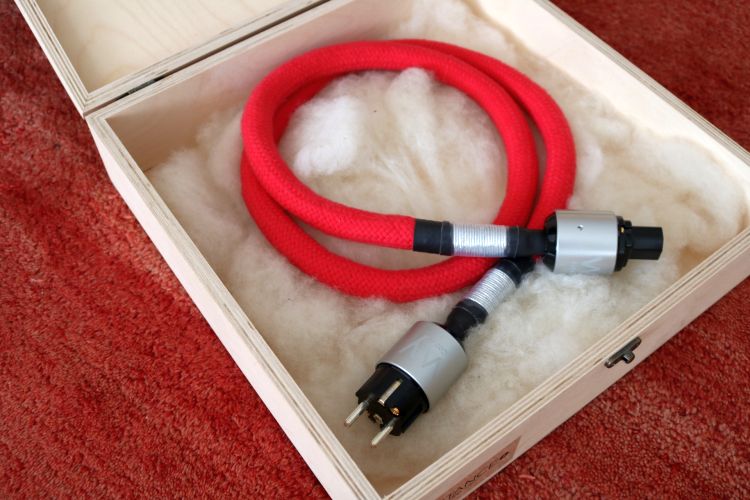
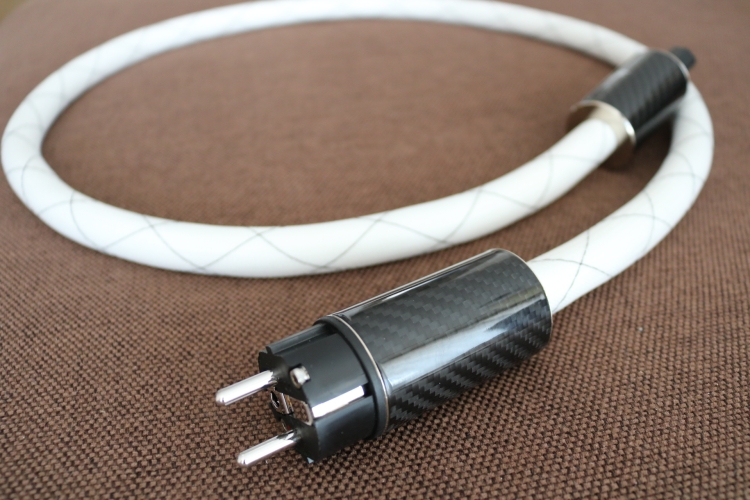
Hello Christiaan
How would you compare the powersync ultra with the Ansuz cables you tested some time ago ?
Thanks a lot
Good question, I actually wondered about that myself! But it’s difficult to say without having both cables side by side. The GigaWatt was very stable throughout its running in period but the Ansuz changed significantly. On the whole, I would say there are similarities in that both cables sound full-blooded, smooth, and free-flowing. My best guesstimate is that ultimately the GigaWatt may be earthier (more grounded) and more neutral whereas the Ansus may more ethereal and more revealing in terms of low-level detail.
Thank you for the review.
When you describe your Belden cable I think their limitations may be due to the admittedlly excellent Oyaide connector, not “in spite” of them. I have a similar experience with mine – I use Western Electric cables actually: the 004 connectors can be too dry and agressive on some devices. They do wonders on my integrated amp but sounded harsh with a few dacs. For a warmer, a bit more forgiving if less open sound, I use the Oyaide 046.
I just ordered a LC2 Evo for my dac yesterday, before I saw your review actually. It’s comforting to see that a dac might be a good place to use it. I was searching the web to see if anyone reviewed it with a dac and I found just that here, so thanks again.
Did Gigawatt tell you when they’re going to replace the Evo 2 with a new Power Sync Supra… or Hypra or Sync++LCS4mk6? I didnt even know the LC3 evo was being replaced.
Sorry, I added my comment before realizing you were an expert in all things Oyaide! Just read the detailed piece you did a few years ago and couldn’t agree more.
Hi Thomas, no worries:-)
I’ve not been informed of any intent to replace the LC2 EVO. If you feel the C004 is dry or aggressive then I’m not sure if you’ll like the LC-2 EVO… here’s hoping it will be a good fit!
Hello Christiaan
What is your thoughts comparing belden 19364 with Oyaide C-004 IEC and Oyaide P-004e vs GigaWatt PowerSync plus?
Best regards,
Matija
Hi Matija, for that, you can take my notes as explained in the review for the Belden with the Bals schuko and Oyaide C-004 and add a little more smoothness and refinement. Otherwise, the Belden remains a Belden.
I find Belden on the harsh side, that is why I have supra lorad 2.5 mk2 now with bals/oyaide c-004, which certainly has a more natural sound. I’m thinking of upgrading with Oyaide P-004e which is quite expensive. For approximately the same money I could go with GigaWatt PowerSync plus. Which route to take ? What is better value for money ? Balanced sound is what I’m looking for.
Not sure as I have never used Supra cables. But even the highest-end connectors won’t make the Belden into something else. So why not just try the PowerSync Plus?